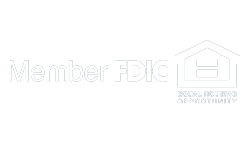In today’s world, the struggle to save money and stay ahead of debt feels like an uphill battle. With the rising costs of essentials such as housing, groceries, insurance, and vehicles, many find themselves wondering if financial stability is merely a pipe dream. Don’t lose hope!
There are budgeting strategies designed to empower individuals to take control of their finances. From popular methods like the 50-30-20 rule and the envelope method to the meticulous zero-based budget, there’s a plethora of budgeting approaches catering to diverse financial preferences. Whether you’re someone who thrives on micromanaging every cent or prefers a more flexible approach, there’s a plan out there tailored to your needs.
Today, we’re shining a spotlight on the “pay-yourself-first” plan – a simple yet effective strategy for those seeking a set-it-and-forget-it approach to saving or debt repayment. This method has you pull a set amount each month that you set aside for your goal first, rather than only saving what remains or neglecting to save at all.
This method is especially effective if you’re someone who struggles to limit discretionary spending. We get it – you only live once, but sometimes it’s important to skip the expensive concert now to save enough to buy your dream home later.
How it Works
To start, you need to calculate your income. If you don’t know the exact amount, go through recent bank statements or pay stubs to see what you’re bringing home after taxes.
Next come up with your goal. It can be creating an emergency fund with enough to cover three months of expenses or saving for a down-payment on a home. You can also take the money to send extra to high-interest debt that you’re trying to pay off.
Once you have your goal, it’s time to work out how much you want to set aside each month. If you’re looking at a longer-term goal, it might be helpful to set a big goal of where you want to be in one year, and then divide it by 12.
If you’re saving, the next step is to choose where you’re going to move the money. If you are looking to bulk up that emergency fund or house-savings account, choose something that will earn you interest like a savings or a money market account.
Now that you’ve paid yourself first, the remaining funds will go toward your bills and hopefully there’s a little left for fun things like a shopping trip or a night out with friends.
There are just two more steps for success:
Make it Automatic
The best way to stick to your goal is to make the paying yourself first step one you don’t even notice.
- If you’re saving for retirement, make sure that money comes out of your direct deposit.
- For those shorter-term savings goals, have the money either directly deposited to the account or set up an automatic transfer.
- For the debt warriors – schedule a monthly payment that comes out before you start tapping into the funds for everyday expenses.
Review and Adjust When Needed
You may have started this process as an optimist, thinking you could spare that much each month to work toward your goal. But if you find yourself having to pull money back out of your savings to cover critical expenses, you may want to re-work your amounts and timelines. Also, life happens, so if a circumstance changes that requires you to change the plan, that’s okay. Just be sure that when you re-set, you’re still sticking to the new plan and keeping your spending in-check.
So, what do you think? Could you get behind this method that forces you to prioritize saving or debt repayment? If you’re someone who does better when extra cash is out of sight and out of mind, consider giving it a try. Our team is here to answer any questions about savings account options and setting up automatic transfers. Let’s start building your financial future together!


